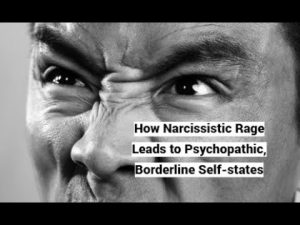Narcissist’s Missing Kali Mother
1. Complex Relationship with Mothers
- Mothers are perceived as protective, loving, but also possessive and controlling. The relationship is complex with ambivalence and a mix of love and hate, characterized by approach and avoidance dynamics. This relationship shapes the foundation of a child’s reality and persists throughout life [00:00].
- Mothers influence deeply through norms, expectations, and internalized voices [01:10].
2. Mythological Representation of Mothers: Goddess Khali
- Khali is introduced as a symbol of the divine mother in Hindu mythology, embodying both nurturing and destructive powers. She represents creation, destruction, and rebirth, reflecting the cyclical nature of life and motherhood [02:10].
- Khali’s terrifying appearance and her role in battles symbolize the cosmic struggle between good and evil, culminating in new worlds after destruction [03:45].
- The goddess’s black color symbolizes emptiness and potentiality, not evil, and she encompasses creation and dissolution in the universe [07:40].
3. Psychological and Symbolic Implications of Khali
- The metaphor for childhood development is highlighted where mothers must “destroy” the symbiotic bond to allow for individuation and selfhood development. Khali represents this necessary separation and transformation [06:00].
- The process of separation is a traumatic yet essential transition for the child, symbolizing the child’s first major realization of individuality [09:40].
4. Maternal Role and “Good Enough Mother” Concept
- Khali exemplifies the “good enough mother,” who pushes the child out into the world despite the conflict and difficulty, promoting growth and individuation [15:20].
- Ambivalence and conflict in mother-child relationships are normal and intrinsic to personal development [15:50].
- The mother’s role includes providing freedom, protection, nurturing, but also necessary destruction and detachment to foster independence [16:20].
5. Evolution of Khali’s Image: From Fearsome to Motherly Figure
- Early Hindu traditions depict Khali as a goddess of death, chaos, and sexuality, with a shift in Bengali traditions in the 18th century adding a maternal, protective aspect to her image [12:45].
- This evolution mirrors the child’s changing perception of the mother, from frustration and fear to nuanced love and protection [14:30].
- Despite added maternal traits in Bengali worship, Khali’s core mythological attributes of destruction and power remain consistent [13:20].
6. Khali and Devotion in Practice
- The tantric approach involves confronting Khali’s fearsome form with courage, while the Bengali approach involves unconditional childlike love for her [15:50].
- Khali teaches acceptance of death and reality, regulating emotional responses to life’s harsh truths [16:30].
- Devotees experience frustration and denial from Khali, which is a critical aspect of their spiritual growth, strengthening resilience and enabling reflection beyond material desires [17:35].
7. The Role of Frustration and Loss in Growth
- Frustration, loss, denial, and craving are essential fuels for personal growth, maturation, and self-evolution. A life without obstacles leads to narcissism and stagnation, and Khali ensures these challenges exist for development [18:00].
- The role of Khali as a force that prevents the fulfilling of all desires instantly is crucial for human psychological progression and existential growth [19:00].
Note: The timestamps are approximate and based on transcript sequence, formatted as [mm:ss].






